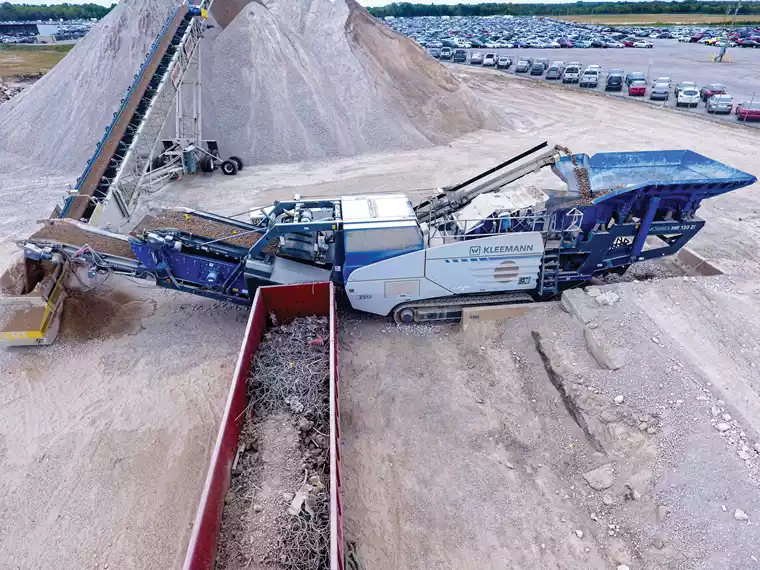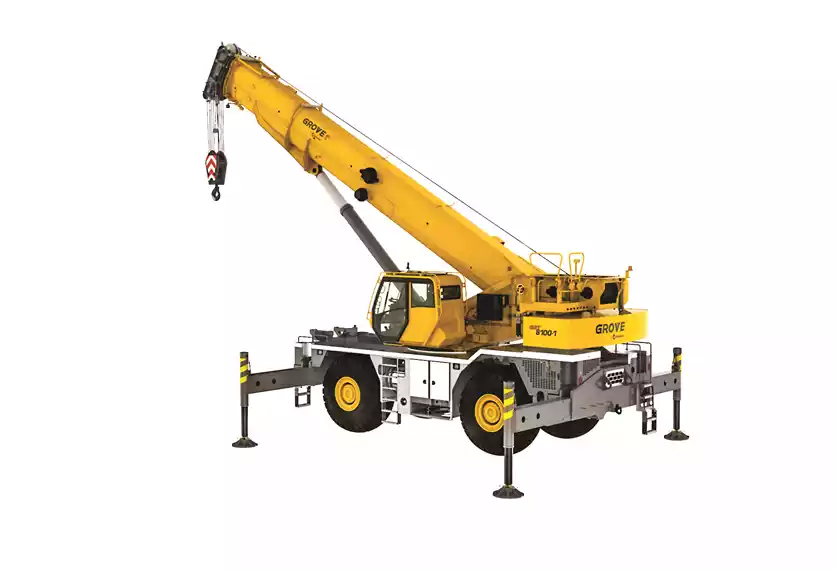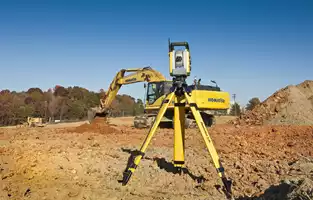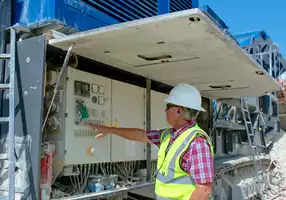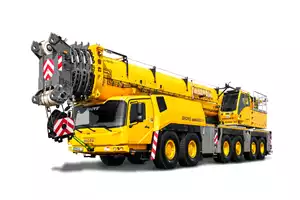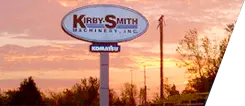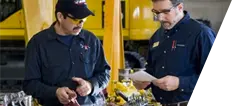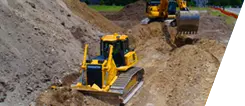Discover how Komatsu’s new dozing logic moves machine control beyond finish grading into rough dozing
Machine control has been around for some time and many contractors have benefited from the advantages these tools have provided. However, in the last few years dramatic functional developments have improved the way many contractors move dirt, adding efficiency and precision where there used to be judgment calls and plenty of boots on the ground measurements.
When it comes to technology, there are always ways to improve and plenty of efforts to find those improvements. With Komatsu's most recent addition to the machine control landscape, the machine itself - in this case, the D51EXi-24, D51PXi-24, D61EXi-24 and D61PXi-24 dozers - gathers its own knowledge about its surroundings to make the job easier for operators and more precise for owners.
The new proactive dozing logic, part of Komatsu's Intelligent Machine Control initiative, allows the machine itself to gauge the surrounding ground, determine what has been done on the area being graded, and use that information to make its own decision on what action is needed to meet the planned grade without limiting the operator's ability to use his skill.
"As the machine is moving, it is recording terrain data and generating a surface based on that, giving the system real-time conditions describing what the terrain around the machine looks like. Now, the system can make calculated decisions - whether it needs to cut and carry material, whether it has to spread or fill that material, or whether they're doing finish grading," said Derek Morris, Komatsu product marketing manager for Intelligent Machine Control and Smart Construction. "By continuously learning the terrain this new logic makes for highly efficient dozing beyond finish grade."
Shaping and finish grading difficult
Prior to the advent of grade control for machines such as dozers, trying to shape and finish grade with dozers was an exercise in precision that required grade stakes, surveyors and expert operators who could run their machine by touch, Morris noted.
"He would load up his blade and then would listen to the draw on the engine, monitoring the travel speed corresponding to whatever gear he was in. He would get the feeling when that blade load would hit its maximum before the tracks would start slipping, and he would pick up and carry the cutting edge tight to the ground so he wouldn't lose material off the blade," Morris said. "That's exactly what proactive dozing logic is doing - making a calculated decision with respect to the existing terrain in front of the machine, allowing the dozer to carry the material to the end of the pass."
Those expert operators know how to move their machines from cutting to filling - they know where the material needs to go, said Michael Salyers, senior product manager for Intelligent Machine Control and Smart Construction with Komatsu. "You want to be able to move material in such a manner to get the right compaction wherever you're going to put hard material like asphalt, pavement and concrete. So, you want to try and spread consistent layers, cut consistent layers and do it as efficiently as possible."
The new dozing logic studies the ground under and around the machine as it works, just like an expert operator might, and takes that information into account the next time it passes across that particular piece of the jobsite. With that knowledge, it can adjust the blade to precisely cut or fill depending on the needs of the location.
It's a significant step forward from today's version of machine control, Salyers said.
"Machine control in the past has just been an add-on to the machine - you bolted it on and used the system to just drive the blade. Everything was really just blade reaction," he said. "When this system becomes part of the machine, now it can gather data, supply it to the system and then be able to compute more information about what is happening on the ground. We now have the capability of understanding what the actual terrain is like."
The machines are designed with an Inertial Measurement Unit (IMU) on the body, along with a GNSS antenna located on the cab. Those two sensors work together to help understand exactly where the tracks are on the ground, Salyers described.
"If we know where the tracks are on the ground, we are able to determine not just horizontal location but also vertical location, and we can generate a profile of whatever we just tracked," he said.
"The machine can store that information, and then whenever it gets ready to go back over that area to cut or work it more, it knows exactly what it was like before when it tracked over it - therefore, it's able to follow the existing terrain, or the terrain that was just created."
Integration aids in advances
Advances in integration of machine control and systems on the dozers themselves have helped Komatsu push these capabilities forward, Morris pointed out.
"Because of this true integration, the machine control system is talking with the tractor's hydraulic controllers, engine controllers and the machine control controller. Really, the majority of the components are the same as they were in 2013 - the logic and intelligence in our Komatsu controllers is the real advancement we're providing," he said.
The combination means that operators are no longer tied directly to design documents programmed into their machine control system, which previously limited the amount of assistance they could use when the situation on the ground changed.
"Operators have had to compensate for the limitations of the existing machine control technology and doze manually the majority of the time," Salyers said. "They had to do what they do best - read the terrain, understand the drainage, recognize where the cuts and fills are and take everything down to a point where they could utilize the technology. Because of this true integration, the operator is now able to truly use the technology from beginning to end."
There's little change to be seen for the operators themselves, Salyers noted; they will continue to run the machine, read the jobsite and move material as the jobsite needs. The dozing logic system will pick up on the terrain and help with blade movement to efficiently take off and place material as required.
For example, if an operator is dozing a wide section of a jobsite in multiple passes set side by side, the machine can provide unique assistance in the process.
Once a first pass is made, there is enough information available to bring that assistance into play.
"When the operator moves to that next blade width, he'd normally have to do all the same input as the first. With this logic, when he tracks back and moves over to the next cut, the machine will follow what he did in that first pass - it means a lot less input, a lot less manipulation of the blade, a lot less work that he has to do," Salyers said. "It learns what he wants the machine to do, and then it starts to do that."
The system also helps with finish grading, bringing precision to the table while handling things like slopes and transitions to assist the operator in protecting the surface from gouging and other issues.
"The proactiveness of the system can look out in front of itself and recognize it has a transition coming up; when the centre of gravity of the machine hits that transition, it boosts hydraulic performance to limit the blade gouging into the finished surface," Morris said.
More efficient dozing
Using proactive dozing logic as part of any job is a way to make work more efficient in the long run while improving production.
"Previously, typical machine control systems were only utilized 10 to 20 percent of the time. Typically in finish grade applications most companies can rationalize and justify their return on investment from that 10 or 20 percent. Imagine if you could use it 100 percent - think about how much quicker the return on investment is and how much more dividend that will pay," Salyers said.
"We're selling a consistent, high-production proactive machine control system, and we're reducing wear and tear on the machine," he added. "The machine is intelligent enough that if you're in a high-production dozing situation you are going to minimize track slip greatly. Fifty percent of the ownership cost of a dozer is the undercarriage. We're going to greatly reduce that ownership cost."
Since its introduction on the D51 and D61 dozers - two of Komatsu's most popular models - the dozing logic technology has proven itself popular and this is a further improvement on that logic, though some operators were skeptical at first, Salyers noted.
"When they get in the seat and start to use it, the reception has been just tremendous - they start to visualize the possibilities of what they can do and understand that this is actually helping them be a better operator, even the experienced ones," he said.
Learn more about SmartConstruction and intelligent Machine Control here!
See intelligent Komatsu Dozers here!
Source: Heavy Equipment Guide

